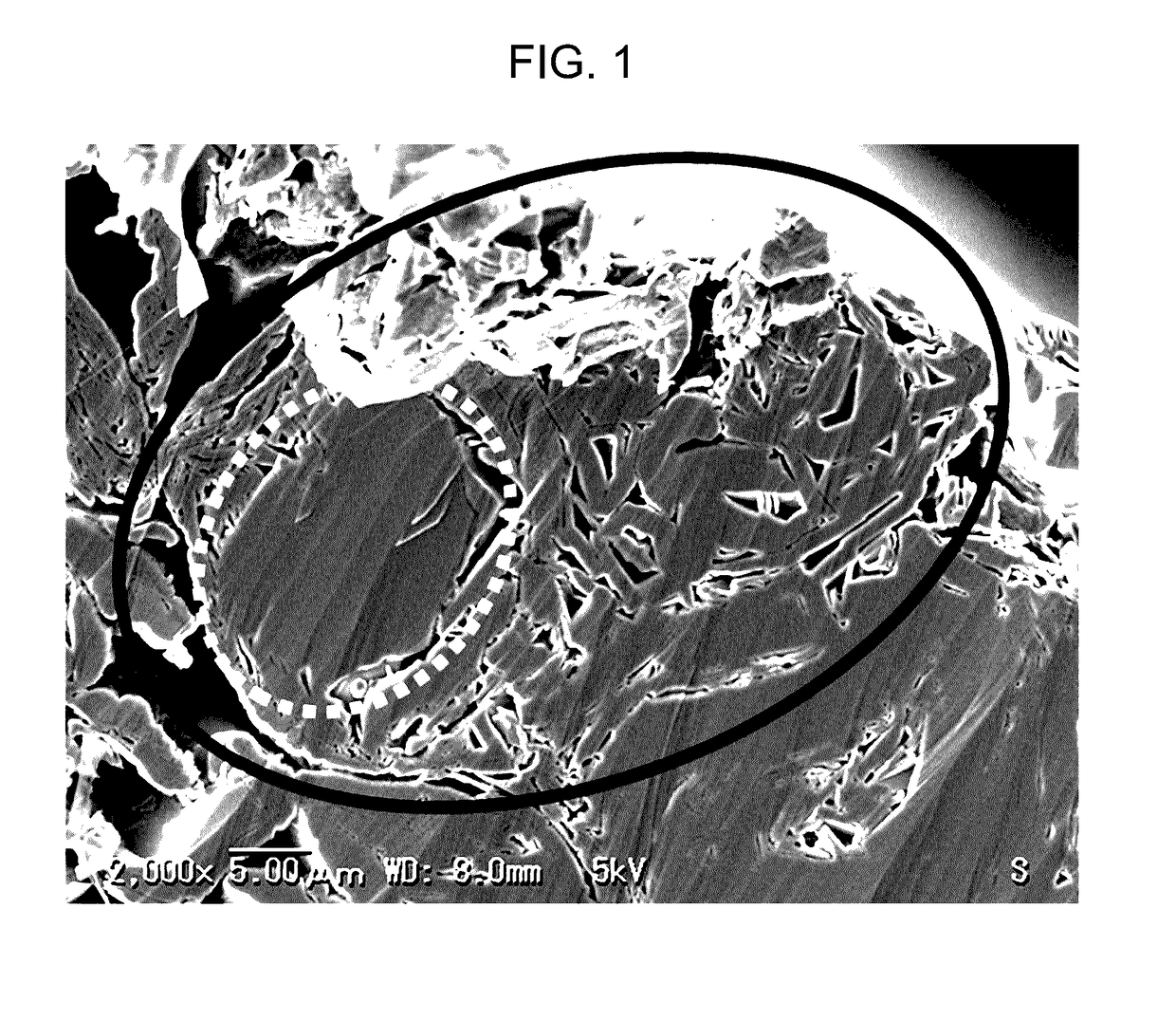Negative electrode material for lithium-ion secondary battery,method for manufacturing negative electrode material for lithium-ion secondary battery, negative electrode material slurry for lithium-ion secondary battery, negative electrode for lithium-ion secondary battery, and lithium-ion secondary battery
- Summary
- Abstract
- Description
- Claims
- Application Information
AI Technical Summary
Benefits of technology
Problems solved by technology
Method used
Image
Examples
example 1
[0128](1) First, 50 parts by mass of a coke powder having an average particle size of 10 μm, 20 parts by mass of tar pitch, 20 parts by mass of silicon carbide, and 10 parts by mass of spherical natural graphite having an average particle size of 20 μm (circularity: 0.92) were mixed together and stirred at 100° C. for 1 hour, thereby obtaining a mixture. Next, the obtained mixture was pulverized to a particle size of 25 μm, and the obtained pulverized powder was placed in a mold and formed into a rectangular cuboid shape. The resultant was heat treated at 1000° C. in a nitrogen atmosphere, and then calcined at 2800° C. to graphitize the graphitizable component. The molded graphite thus obtained was pulverized, thereby obtaining a graphite powder (a negative electrode material for a lithium-ion secondary battery).
[0129]With regard to the obtained graphite powder, the average particle size, the R-value, the pore volume, the specific surface area, the saturated tap density, and the pea...
example 2
[0155]The graphite powder obtained in Example 1 was placed in a rubber container, and the rubber container was sealed. The rubber container was then subjected to an isotropic pressing treatment using a pressing machine at a pressure of 9800 N / cm2 (1000 kgf / cm2). The graphite powder was then crushed using a cutter mill and graded with a sieve, thereby obtaining a graphite powder of Example 2.
[0156]A negative electrode for a lithium-ion secondary battery and a lithium-ion secondary battery were produced in the same manner as in Example 1, and measurements were performed in the same manner as in Example 1. The results are shown in Table 1.
example 3
[0157]A graphite powder of Example 3 was obtained in the same manner as in Example 2 except that the coke powder, the tar pitch, and the silicon carbide were mixed, stirred, and pulverized to obtain a pulverized powder, and then the spherical natural graphite was mixed with the obtained pulverized powder.
[0158]A negative electrode for a lithium-ion secondary battery and a lithium-ion secondary battery were produced in the same manner as in Example 1, and measurements were performed in the same manner as in Example 1. The results are shown in Table 1.
PUM
 Login to View More
Login to View More Abstract
Description
Claims
Application Information
 Login to View More
Login to View More - R&D
- Intellectual Property
- Life Sciences
- Materials
- Tech Scout
- Unparalleled Data Quality
- Higher Quality Content
- 60% Fewer Hallucinations
Browse by: Latest US Patents, China's latest patents, Technical Efficacy Thesaurus, Application Domain, Technology Topic, Popular Technical Reports.
© 2025 PatSnap. All rights reserved.Legal|Privacy policy|Modern Slavery Act Transparency Statement|Sitemap|About US| Contact US: help@patsnap.com

